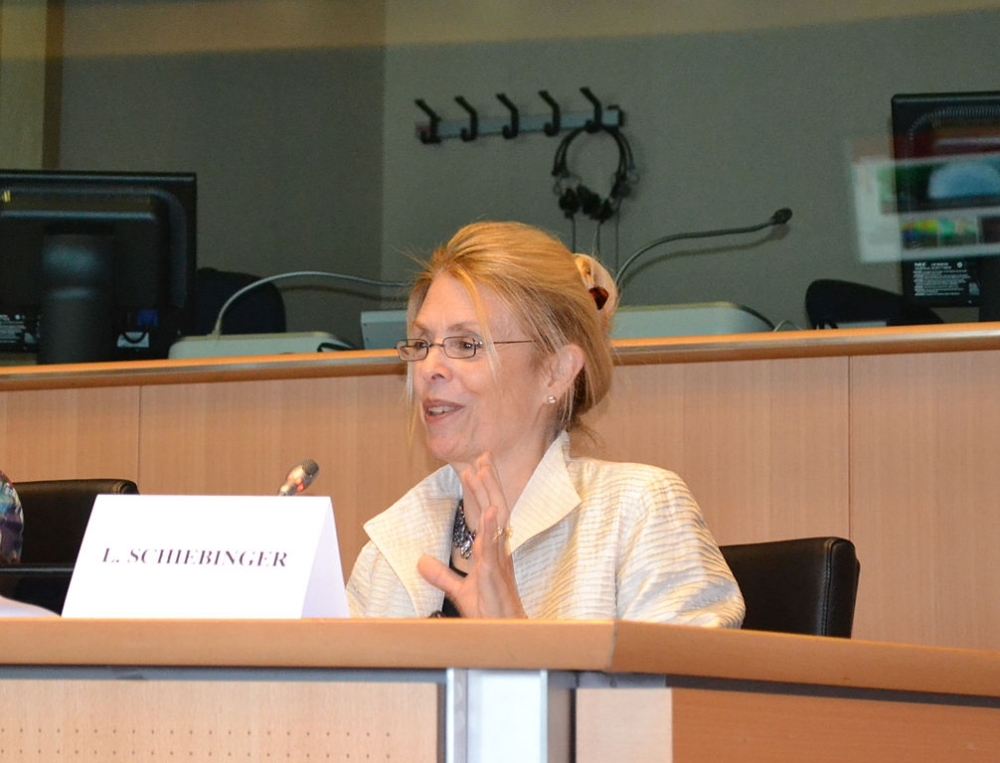


Londa Schiebinger, Professor of History at Stanford, says privileging male over female is an obstacle to scientific and technological development (photo: Chiara Tripepi / Wikimedia Commons)
Published on 05/13/2021
By José Tadeu Arantes | Agência FAPESP – Ten drugs were recently withdrawn from the US market because of life-threatening health effects. Eight of them posed greater risks for women than for men. Developing drugs costs billions, but when they fail, they cause human suffering and death.
“We can’t afford to get it wrong,” said Londa Schiebinger, John L. Hinds Professor of History of Science at Stanford University and Project Director, Gendered Innovations in Science, Medicine, and Engineering, in an address to the 8th Annual Meeting of the Global Research Council (GRC), held in São Paulo, Brazil, on May 1-3, 2019.
Examples like this one raise inevitable questions: “Can we harness the creative power of gender and sex analysis for discovery? Does considering gender add a valuable dimension to research? Does it take research in new directions?”
A new area of study, known as Gendered Innovations, was born out of the quest to answer those specific questions. “The aim is to stimulate excellence in science and technology by integrating gender and sex analysis into research,” Schiebinger said.
Schiebinger offered a simple but compelling example of how research that fails to take sex and gender into account costs lives and money.
The main goal of Gendered Innovations, the project Schiebinger is leading, is to get research right from the very beginning. It sets out to develop state-of-the-art methods of gender and sex analysis and to offer case studies showing how this type of analysis leads to discovery and innovation.
Returning to the example of drug development, Schiebinger used quantitative data to show that most research in this field uses only male cells, tissues, animal models and human volunteers. Worse still, sex is not reported, and many studies are biased in this regard.
“Why is this relevant?” she asked. “Research shows that there are sex differences in the therapeutic capacity of stem cells. For example, stem cells taken from muscle tissue are more regenerative than male cells. Yet very few researchers consider the sex of the cell, which can lead to failed research.”
He said, she said
Moving on from biology and big pharma to computer science, and specifically to machine learning, Schiebinger recalled an intriguing experience she had years ago after being interviewed in Madrid by Spanish newspapers.
On returning home and putting the articles through Google Translate, she was shocked to see repeated use of the masculine pronoun in referring to her: “he said”, “he wrote”, and so on. There was even the occasional “it” (“it thought”).
“Google Translate has a male default. It defaults to the masculine pronoun because ‘he said’ is more commonly found on the web than ‘she said’,” Schiebinger argued.
“We know from NGram, another Google product, that the ratio of ‘he said’ to ‘she said’ has fallen dramatically from a peak of 4:1 in the 1960s to 2:1 since 2000. This parallels exactly the global rise of the women’s movement and also of government funding to increase the numbers of women in science and technology, especially in the 1980s. With one algorithm, Google wiped out 40 years of revolution in language, and they didn’t mean to. This is unconscious gender bias.”
Correcting an algorithm is easy, and Google’s engineers rapidly agreed to do so when alerted to the problem at a workshop. However, Schiebinger stressed that constantly retrofitting for women is not the best road forward.
“Some products can be fixed, but what if Apple, Google and other companies started product development research by incorporating gender analysis? What innovative technologies, software and systems could be conceived?” she asked.
“The point I want to make is that this unconscious gender bias from the past amplifies gender inequality in the future. When a translation program is automatically biased toward ‘he said’, this reinforces the stereotype that men are the active intellectuals and shuts women out of such a role. It increases the relative frequency of the masculine pronoun on the web and can reverse advances achieved toward gender equality.”
The Gendered Innovations in Science, Medicine, Engineering, and Environment Project portal is at genderedinnovations.stanford.edu/index.html.
The 8th Annual Meeting of the Global Research Council (GRC) was organized by FAPESP, Argentina’s National Council for Scientific and Technical Research (CONICET) and the German Research Foundation (DFG).
Source: https://agencia.fapesp.br/30587